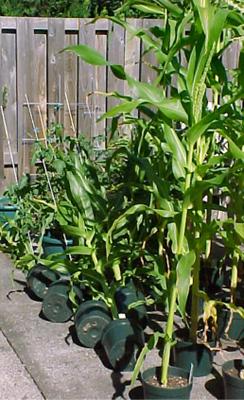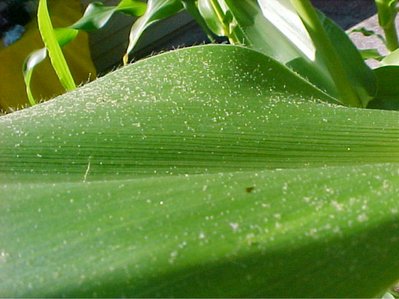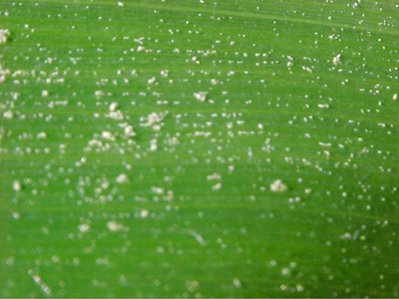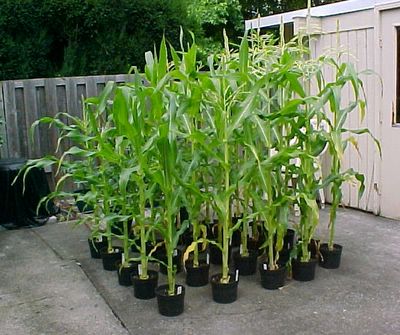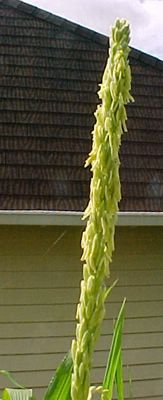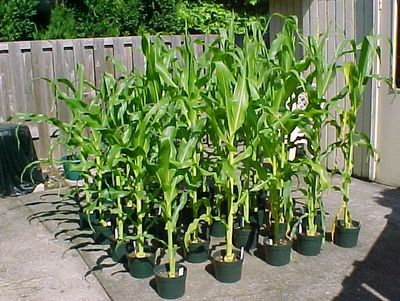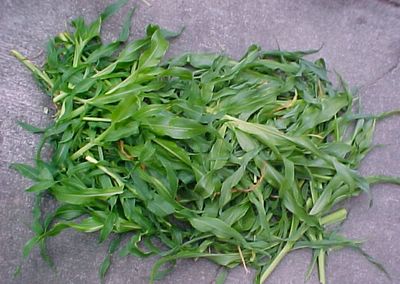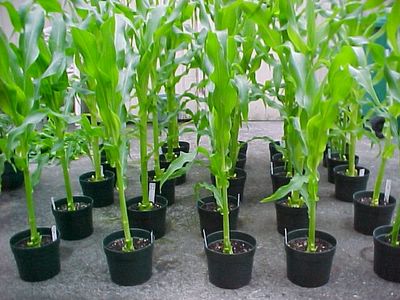First silk sighting today!
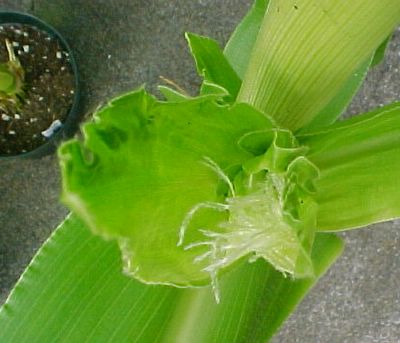

The pot has been topped off with about 1/2-inch of one part steer manure to three parts soil. Each morning it will get a 12 oz. Miracle Gro feeding, and on hot afternoons a watering, both as low to the ground as possible to discourage aphids and not interfere with development of spikes, silk, or pollination.
Harvest is twenty-one days after silk’s first appearance. Each plant is tagged with a number to keep track of its dinner date.
How the cobs and silk grow together.

July 9, 2005Third day of silking.


The cob

Showing how cob and silk grow together. The corn stock is just to the cob’s right.

July 11, 2005Fifth day of silking.
Looking down on the silk.

Side view of the silk.
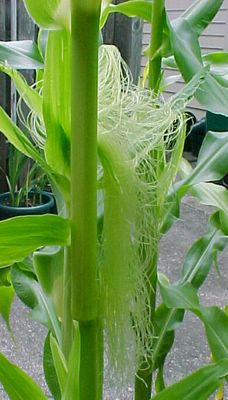
Cob.

The top of the cob is growing away from the stock.

Silk and cob.

July 13, 2005Seventh day of silking.
The silk is starting to dry up.

This photo shows a second silk developing below the silking we have been following, both on the same plant. You can also see how cob coninues to grow away form the stock.

July 15, 2005
Ninth day after silking begins
The silk is now visibly drying out, and changing color.

The second cob is just starting to silk.

 On July 16, just 12 days before harvesting of the first cob, I broke my leg. So, this is where the corn garden account ends for the year. We harvested our crop, and enjoyed every cob, except those begged off by the neighbors.
On July 16, just 12 days before harvesting of the first cob, I broke my leg. So, this is where the corn garden account ends for the year. We harvested our crop, and enjoyed every cob, except those begged off by the neighbors.